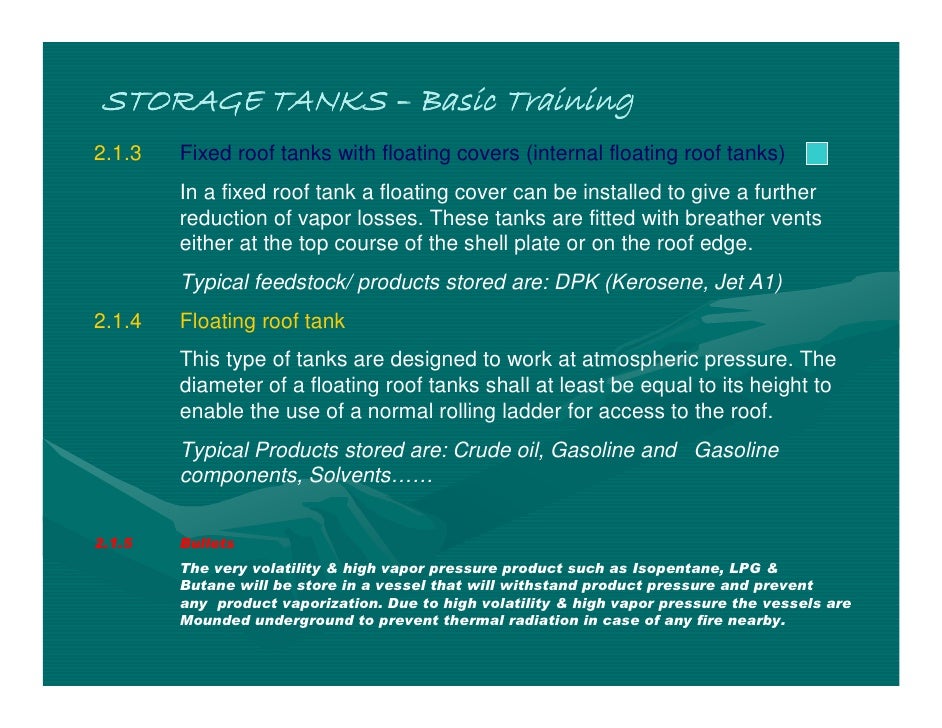Cone roof tank this type of tank is a low pressure storage tank with a fixed cone shaped roof.
Floating roof tank design pressure.
The roof rises and falls with the liquid level in the tank.
It consists of an open topped cylindrical steel shell equipped with a roof that floats on the surface of the stored liquid.
In the shell design analysis shell stress design will be performed taking into consideration of all the considerably loading including hydrostatic pressure wind loading and seismic loading.
The idea behind floating roof tanks is to eliminate or minimize this vapor space.
The storage tank design consists of two major designs that is 1 the shell design analysis and 2 the floating roof design.
As the tvp increases above 11 to 12 psia daily heating of the product under a center deck will produce enough vapors to balloon the deck.
Most current environmental regulations limit the product tvp to less than 11 1 psia.
Atmospheric storage tank this type of tank operates from atmospheric pressure to 0 5 psi 0 034 bar.
Common terms for tank pressure control are out breathing and in breathing.
According to api 620 1 the maximum allowable pressure for storage tanks is 15 psi and if the pressure is larger than this value it is considered as a pressure vessel.
Closed floating roof tank this has an internal floating roof but eliminates natural ventilation of the tank vapor space.
Out breathing is when a tank releases pressure.
An external floating roof tank is a storage tank commonly used to store large quantities of petroleum products such as crude oil or condensate.
A floating roof crude oil storage tank of 100 000 bpd capacity was designed taking into consideration the available geotechnical and meteorological information of the location site.
2 floating roof tank.

